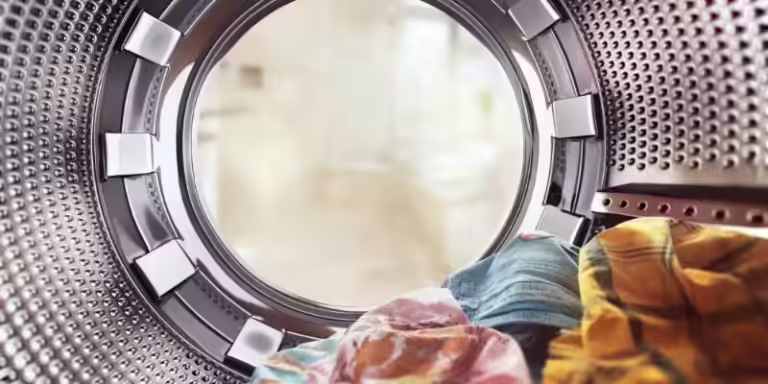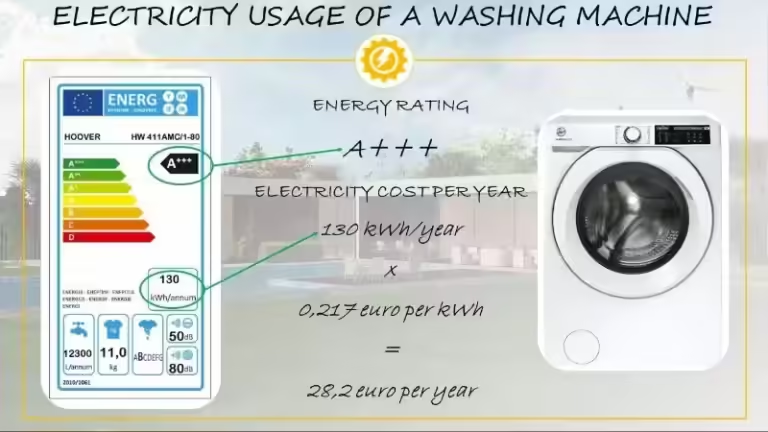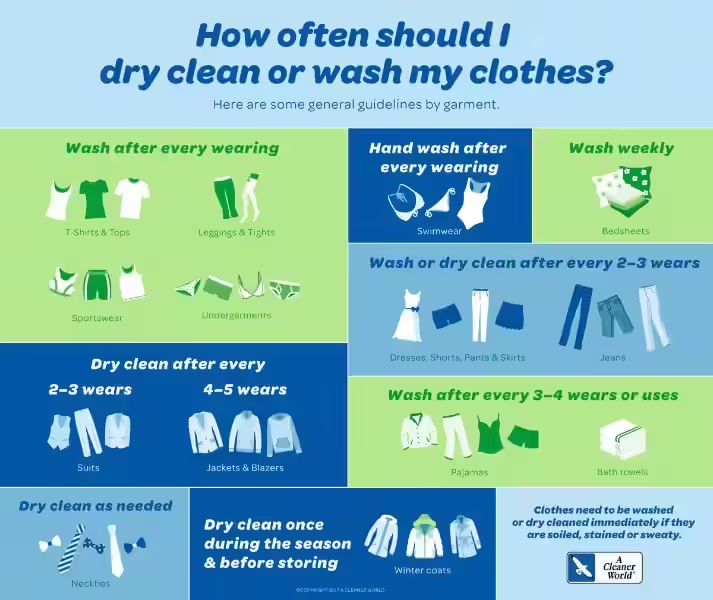Does a Washer and Dryer Use a Lot of Electricity?

Laundry day is an inevitable part of life, but have you ever stopped to consider the amount of electricity your washer and dryer consume? While a single load might seem insignificant, the cumulative cost of running these appliances can add up over time. This article explores the energy consumption of washing machines and dryers, emphasizing the costs associated with their use and providing tips for saving money and reducing your environmental impact.
Washing Machine Energy Consumption: A Closer Look
Washing machines, despite their seemingly simple function, can be surprisingly energy-intensive. The average washing machine uses between 400-1,400 watts per hour, depending on the model and cycle settings. This translates to an average cost of $0.11-$0.25 per load, with the actual amount fluctuating based on your state and electricity rates. For example, running two loads of laundry per week in New York could cost you up to $26 per year.
The energy consumption of a washing machine is primarily influenced by factors like water heating, motor power, and cycle duration. Newer, energy-efficient models often feature advanced technologies like cold water washing, variable speed motors, and intelligent sensors that optimize water usage, resulting in lower electricity consumption.
Dryer Energy Consumption: A Significant Energy Hog
Dryers are notorious for their high energy consumption, often exceeding washing machines by a significant margin. The average dryer uses between 1,800-5,000 watts per hour, with most models consuming around 3,000 watts. This translates to an average cost of $0.23-$1.13 per load, again varying based on your location and electricity rates. Running two loads of laundry per week in Pennsylvania could cost you up to $48.88 per year, while in New York, the same usage could amount to $117.52 per year.
The energy consumption of a dryer is primarily attributed to the heating element, which requires substantial power to generate heat for drying clothes. Modern dryers often incorporate features like moisture sensors and variable heat settings to optimize drying time and reduce energy consumption. However, even with these advancements, dryers remain one of the most energy-intensive appliances in the home.
Saving Money and Reducing Your Footprint: Tips for Energy-Efficient Laundry
Fortunately, there are numerous ways to reduce your laundry's energy consumption and save money on your electricity bills. Here are some practical tips to implement:
Purchase Energy Star Appliances
Energy Star certified appliances are designed to be significantly more energy-efficient than standard models. They meet specific energy performance standards set by the U.S. Environmental Protection Agency, ensuring lower electricity consumption and reduced environmental impact. Choosing Energy Star certified washers and dryers can result in substantial savings on your energy bills over the appliance's lifespan.
Run Appliances During Off-Peak Hours
Electricity rates often vary throughout the day, with lower rates typically offered during off-peak hours, such as late at night and early in the morning. By scheduling your laundry during these periods, you can potentially save money on your energy bills. Check with your local utility provider to learn more about their rate structures and identify the most cost-effective times for running your appliances.
Use Cold Water
Heating water for washing clothes consumes a considerable amount of energy. While hot water is often considered essential for cleaning, cold water is just as effective for most laundry loads. Switching to cold water washing can significantly reduce your energy consumption and save money on your heating bills.
Run Full Loads
Avoid running partially filled washing machines and dryers. These appliances use the same amount of energy regardless of the load size. Running full loads ensures that you are maximizing the energy efficiency of your appliances and minimizing waste.
Clean the Lint Trap
A clean lint trap is crucial for efficient dryer operation. Accumulated lint restricts airflow, forcing the dryer to work harder and consume more energy. Regularly cleaning the lint trap not only improves the drying efficiency but also reduces the risk of fire hazards.
Dry Clothes in the Sun
During warmer months, consider utilizing natural drying methods to save on energy. Sunlight is a powerful and free source of energy that can effectively dry clothes. Line drying or using a clothes rack outdoors can significantly reduce your reliance on the dryer.
Beyond Laundry: Additional Tips for Saving Energy
Reducing your laundry's energy consumption is just one piece of the puzzle when it comes to saving energy and money. Here are some additional tips to implement throughout your home:
- Consider switching to an energy provider with lower rates.
- Enroll in energy protection programs to prevent unexpected repair costs.
- Implement energy-saving habits in your daily routine, such as turning off lights when leaving a room, unplugging unused appliances, and taking shorter showers.
- Educate yourself on energy efficiency and conservation practices to make informed decisions about your home's energy usage.
While the cost of a single load of laundry may seem small, it can add up significantly over time. By taking steps to reduce energy consumption, you can save money, minimize your environmental impact, and contribute to a more sustainable lifestyle.
Does a washing machine use a lot of electricity?
Washing machines consume an average of 400 to 1,400 watts per hour. The cost per load can vary from $0.11 to $0.25, depending on your state and electricity rates. Running two loads a week could cost you up to $26 per year in New York.
Does a dryer use a lot of electricity?
Dryers consume an average of 1,800 to 5,000 watts per hour, with most using around 3,000. The cost per load can range from $0.23 to $1.13, again depending on your location and electricity rates. Running two loads a week could cost you up to $48.88 per year in Pennsylvania and $117.52 in New York.








